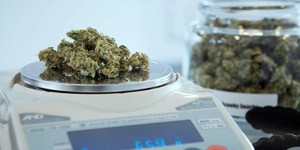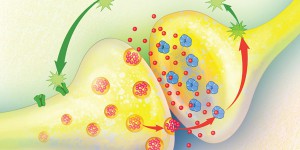By Mariano Garcia de Palau

Born in Barcelona, 17 February 1956. Graduated in medicine and surgery from the University of Barcelona in 1979. For 38 years has worked as an emergency physician in the area of occupational medicine. He became interested in cannabis by chance, and for the last 15 years has studied its therapeutic uses.
Currently he continues to advise on cannabinoid treatments and performs clinical work with patients, collaborates with various organizations and associations, serves as Senior Consultant for Grupo Curativa Colombia and is a spokesperson for the Spanish Medical Cannabis Observatory.
Part 1:
Cannabinoids and autism spectrum disorder (ASD)
Autism, also known as autism spectrum disorder, is a group of diverse disorders related to brain development. I prefer to talk about an autistic domain rather than a spectrum. We speak of neurodivergence as a concept that covers the diversity in the individual brain function and behaviour. As a concept, neurodivergence encompasses more than just ASD, and is applicable to many other behaviours or behavioural patterns, such as ADHD, intellectual disabilities, Tourette's syndrome, psychosis, etc.
Many parents of children with developmental, behavioural, and mental health disorders are increasingly asking whether medical cannabis could be a therapeutic option for their children. Evidence from some open studies suggests the potential of medical cannabis to improve some symptoms in children with autism spectrum disorder. However, only one double-blind, placebo-controlled trial has been completed, with inconclusive results. For example, transdermal synthetic cannabidiol has shown efficacy in reducing social avoidance in a subgroup of children with fragile X syndrome. Studies on medical cannabis are ongoing in children and adolescents with autism, intellectual disabilities, Tourette's syndrome, anxiety, psychosis, anorexia nervosa, and other specific neurodevelopmental syndromes.
The symptoms presented by these patients are usually detected in early childhood, but given the variability of symptoms and their highly variable degree of severity, some are only diagnosed as adults; other syndromes such as fragile X syndrome, tuberous sclerosis complex, or Rett syndrome are usually diagnosed early due to their characteristics and diagnostic tests.
In the case of the SINGAP1 genetic mutation, there are specific sensory, auditory, and tactile alterations that generate situations that are complex and often difficult to interpret. Basically, clinical experience is what helps us to understand the needs of each patient in relation to treatment, to provide improvement in symptomatology and, above all, to improve the quality of life of patients and their families, facilitating a fuller life without adverse side effects during treatment with cannabis, which must be personalised according to the needs and characteristics of each patient.
Remember that pharmacological treatments, including antidepressants, psychostimulants, and antipsychotics, are often prescribed to treat mental health and behavioural problems in children with developmental disabilities, but these medications carry a high risk of adverse effects, including sedation, changes in mood, appetite and cognition, metabolic syndrome and extrapyramidal effects, and often do not provide a therapeutic benefit to justify them. Cannabis treatments allow us to follow this therapeutic approach with – for the time being – a very positive risk-benefit balance.
Approximately one in every 100 children has autism.
The abilities and needs of people with autism vary and may change over time. While some people with autism can live independently, there are others with severe disabilities who need constant care and support throughout their lives. They are dependent 24 hours a day, so many parents have to devote themselves exclusively to the care of the patient, which makes it impossible for them to do paid work. In low-income families, this is a major constraint. Let's bear in mind the personal impact on caregivers and families.
Caring for people with autism must be accompanied by measures in the community and society, to achieve greater accessibility, inclusiveness, and support.
Boys are four times more likely to have an autism spectrum disorder than girls.
Families with one child with ASD have an increased risk of having another child with ASD. It is also common for parents or relatives of a child with ASD to have minor problems with social and communication skills, or certain behaviours typical of ASD. Sometimes we see parents with undiagnosed ASD, and we conclude that they are undiagnosed autistic adults with mild or moderate impairment who have been able to adapt to social conditioning and lead a "normal" life - and here again we return to the concept of neurodivergence.
We need to treat these patients in a multidisciplinary way, and use the necessary therapeutic tools for each patient according to their characteristics and needs.
The first recommended therapeutic level is a specific microbiota study to see which bacterial populations are altered. Not only bacterial populations, however. We also have to study parasites and inflammatory markers, since we will generally find the presence of parasites in 80% of these patients. We find Giardias and Lamblias in 20 to 30% of them, Blastocystos hominis in 10 to 15%, and Dientamoeba fragilis in 10%, as well as other parasites.
There can be a high prevalence of yeasts: Candida is very present and we must take it into account. Already, we have even found it in the oral microbiota. The microbiota is affected in specific populations, such as increased bacteroidetes and bifidobacterium, in general greatly decreased in the population. We find bacterial over-infection in many cases, so we will prescribe specific treatments to correct this excess growth and subsequent repopulation through the use of prebiotics, probiotics, or symbiotics, depending on each case. These patients are very selective eaters, which contributes to the development of a deficient microbiota due to the lack of variation in their diet: it is sometimes very difficult to achieve correct eating habits in these children. Their digestion is, in general, conflictive. As 60% of patients have problems digesting disaccharides, the FODMAP diet may be another resource for some patients with this specific problem. In many cases fats and proteins are poorly digested. Diet is therefore a determining factor, and we need to achieve a competent microbiota and the best possible eating habits. Very important: if we do not achieve a stable microbiota, the treatment will not have the efficacy that we intend or that we can achieve when we solve the food problem.
Only with a correct diet that balances the lipidoma can we achieve good results that have a direct impact on the quality of life of the patient and their environment. We will eliminate added sugar, lactose, casein, gluten, and be wary of flavourings added to many products. The use of microwaves can also be questionable, with many health professionals advising against it, especially in these cases. We also have to supplement these patients with Omega 3, Vit D3+K2, Vit A (85% beta-carotene and 15% palmitate), Vit E (alpha tocopherol), B complex, B1 (thiamine), B2 (riboflavin), B3 (niacin), B5 (pantothenic acid), B6 (pyridoxine), B7 (biotin), B12 (cobalamin), and folic acid. We also supplement with zinc, magnesium, selenium, calcium, and copper.
If we can have a prior analysis to assess the blood levels of these molecules, we can supplement much more accurately, but we must bear in mind that we usually find deficiencies, such as in the case of vitamin D, which is essential for many biological processes. The use of certain fungi, such as Hericium erinaceus, Cordyceps sinensis, and Ganoderma lucidum, is recommended for the presence of beta-glucans, useful for keeping the immune system competent and alert and increasing the efficacy of macrophages and natural killers.
Cannabis treatment in these cases is just one more tool to achieve the best possible results: the use of cannabis is not the only thing that will lead to a better quality of life for patients. As we have seen above, all the tools that can have a positive effect on the complex symptomatology we see in these patients must be put in place.
As for the treatment of these patients with cannabis, we will consider their particular characteristics, as we always advise with treatments with this plant; basically, we will use THC and CBD in different doses and proportions according to the characteristics of each patient's ASD and the degree to which they are affected, as well as their behavioural patterns. In children, frustration generates self- or hetero-injurious behavioural patterns, and treatments attempt to stabilise patients behaviourally; in these cases, in my clinical experience, the use of THC is very important. If we see behavioural problems, which are almost always present, whether or not associated with epilepsy, we will use THC in specific doses and proportions in relation to CBD. It should be remembered that in the case of glutamatergic neurons, which are involved in epileptic seizures, THC acts through the CB1R, inhibiting neuronal excitability in a retrograde manner, since glutamate is the main excitatory neurotransmitter, and in epileptic seizures its levels escalate to the point of generating neurotoxicity.
We can also improve stereotypes and cognitive performance, stabilise behaviour, and control anxiety and temper tantrums by reducing frustration. Remember that the drugs prescribed in these cases, such as antipsychotics, benzodiazepines, or psychostimulants, have a multitude of adverse effects such as sedation, behavioural changes, cognitive problems, metabolic syndrome, and extrapyramidal effects. In the case of cannabis treatment, adverse effects are predictable and easily resolved in a matter of hours or days. Long-term treatments with cannabis are possible and we only have to ensure that THC is suspended periodically in order to avoid the tolerance that it can generate and the need to increase dosages regularly. This potential problem can be avoided by interrupting THC use for 4 to 7 days each year. There are other, lesser known, cannabinoids, such as THCV and CBDV, which we could consider, for example, as candidates to add to or replace CBD, as CBDV is probably more potent than CBD in terms of dosage/effect ratio; at the moment, however, they are not being used in treatments.
We know that there is mitochondrial dysfunction in these patients and we know the molecular pathway that generates it: we have receptors of the endocannabinoid system in the mitochondria, so we can also act at this level. The results we obtain, at least in the cases I treat, justify the use of the plant for the treatment of this neurodivergence: few adverse effects, very controllable, and an improvement in the quality of life of the patient and their environment. The parents are the ones who best appreciate their children's new state of being. It is necessary to talk to the parents of the children under treatment, so that they can assess the outcome and report on the evolution of their children treated with cannabis.
References:
Comprehensive Nutritional and Dietary Intervention for Autism Spectrum Disorder—A Randomized, Controlled 12-Month Trial
James B Adams 1 , Tapan Audhya 2 , Elizabeth Geis 3 , Eva Gehn 4 , Valeria Fimbres 5 , Elena L Pollard 6 , Jessica Mitchell 7 , Julie Ingram 8 , Robert Hellmers 9 , Dana Laake 10 , Julie S Matthews 11 , Kefeng Li 12 , Jane C Naviaux 13 , Robert K Naviaux 14 , Rebecca L Adams 15 , Devon M Coleman 16 , David W Quig 17
Probiotics and fructo-oligosaccharide intervention modulate the microbiota-gut brain axis to improve autism spectrum reducing also the hyper-serotonergic state and the dopamine metabolism disorder
Ying Wang 1 , Ning Li 2 , Jun-Jie Yang 3 , Dong-Mei Zhao 4 , Bin Chen 5 , Guo-Qing Zhang 6 , Shuo Chen 7 , Rui-Fang Cao 8 , Han Yu 9 , Chang-Ying Zhao 10 , Lu Zhao 11 , Yong-Sheng Ge 12 , Yi Liu 13 , Le-Hai Zhang 14 , Wei Hu 15 , Lei Zhang 16 , Zhong-Tao Gai 17
The effect of cannabidiol (CBD) on low-frequency activity and functional connectivity in the brain of adults with and without autism spectrum disorder (ASD)
Charlotte M Pretzsch 1 , Bogdan Voinescu 1 , Maria A Mendez 1 , Robert Wichers 1 , Laura Ajram 1 , Glynis Ivin 2 , Martin Heasman 2 , Steven Williams 3 , Declan Gm Murphy 1 , Eileen Daly 1 , Gráinne M McAlonan 1
Abnormalities of synaptic mitochondria in autism spectrum disorder and related neurodevelopmental disorders
Liliana Rojas-Charry 1 2 3 , Leonardo Nardi 1 , Axel Methner 4 5 , Michael J Schmeisser 6 7
The Role of Microbiome, Dietary Supplements, and Probiotics in Autism Spectrum Disorder
Bhagavathi Sundaram Sivamaruthi 1 , Natarajan Suganthy 2 , Periyanaina Kesika 1 , Chaiyavat Chaiyasut 1


